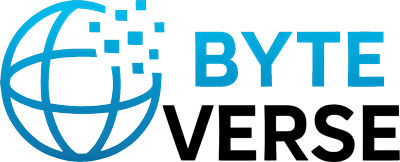By [Yash Rajpoot]
In the world of artificial intelligence, few names carry as much weight as OpenAI. Born as a non-profit research lab with a mission to ensure AI benefits humanity, it has evolved into a powerhouse at the heart of Silicon Valley’s most transformative technology. Its products — from ChatGPT to advanced image and code generation systems — have reshaped industries, workflows, and public debate.
Now, OpenAI’s decision to pursue a non-binding restructuring agreement with Microsoft is stirring global discussions. At stake is more than just corporate governance. The move raises fundamental questions about who controls AI, how it should be regulated, and whether innovation will remain open or increasingly concentrated in the hands of a few giants.
From Idealism to Industry Titan
When OpenAI launched in 2015, it was backed by tech luminaries including Elon Musk and Sam Altman. The founding charter emphasized open research, transparency, and safeguarding humanity against the risks of artificial general intelligence (AGI).
But ideals collided with reality. AI development proved costly — requiring vast compute power, massive datasets, and world-class talent. To sustain itself, OpenAI shifted to a “capped-profit” model in 2019 and accepted Microsoft’s billions in funding. Today, Microsoft holds a major stake and integrates OpenAI’s models into products like Office and Azure.
The restructuring move — still under negotiation — would adjust this relationship, giving OpenAI more independence while ensuring Microsoft remains a core partner. Both companies frame it as a way to balance innovation with accountability. Critics, however, see it as another step toward big tech dominance over a critical technology.
The Governance Question
Artificial intelligence isn’t just another app. Its reach is unprecedented: it influences hiring decisions, medical diagnostics, warfare simulations, and even political communication. With such impact, who governs AI development matters profoundly.
OpenAI has long promoted itself as a guardian of responsible AI. Yet recent controversies — from internal boardroom battles to disputes over transparency — have dented its credibility. The restructuring attempt, some analysts argue, is as much about restoring public trust as it is about corporate efficiency.
Governments are paying close attention. The European Union is finalizing its AI Act, the world’s first comprehensive legal framework for artificial intelligence. The U.S. has issued executive orders emphasizing AI safety and competition. China, meanwhile, is racing ahead with its own heavily state-directed AI ecosystem.
OpenAI’s restructuring will inevitably intersect with these regulatory landscapes. Will policymakers see the move as a step toward accountability or as evidence that AI power is consolidating dangerously?
Innovation vs. Monopoly
The tension between fostering innovation and preventing monopoly is central to this debate. On one hand, OpenAI’s close relationship with Microsoft has enabled it to scale rapidly, delivering products that billions now use. On the other, it risks squeezing out smaller competitors and startups who cannot match such financial and computational resources.
“AI was supposed to be the next great equalizer,” says Dr. Priya Menon, a tech policy researcher. “Instead, we may be watching it become the most concentrated market in history.”
Startups across the globe — from India’s generative AI firms to Europe’s language model developers — complain that access to GPUs (the lifeblood of AI training) is increasingly dominated by a handful of players. With Microsoft, Nvidia, and a few others at the top, the playing field looks anything but level.
Global Ripple Effects
The restructuring is not just an American story. Around the world, nations are recalibrating their AI strategies in response.
- Europe: Regulators are expected to scrutinize the deal under antitrust lenses. EU lawmakers argue that AI governance must prevent market capture.
- India: Home to a fast-growing AI ecosystem, India sees OpenAI as both a partner and a competitor. Local firms worry about access to infrastructure but also benefit from collaboration.
- China: Already cut off from OpenAI products, China is accelerating its domestic AI race. Observers suggest the restructuring may embolden Beijing to double down on indigenous innovation.
- Global South: Countries in Africa and Latin America, where AI is still nascent, fear being left behind entirely if a few Western firms dictate global standards.
In effect, OpenAI’s corporate governance decision is reshaping international AI geopolitics.
Transparency and Accountability
For many critics, the most pressing concern is transparency. Despite its name, OpenAI is no longer “open.” Access to its most advanced models is restricted, research is less freely shared, and decision-making processes are often opaque.
The restructuring deal offers a chance to reset. Advocates want to see stronger independent oversight, clearer disclosures about model risks, and mechanisms that include voices from academia, civil society, and the Global South.
Yet skeptics question whether such reforms are genuine or cosmetic. “Without binding commitments, this restructuring risks being more PR than policy,” warns a former OpenAI employee who spoke on condition of anonymity.
The Road Ahead
AI is still in its infancy, but decisions taken today will echo for decades. OpenAI’s restructuring may determine whether AI evolves as a shared global resource or a privately controlled utility.
For journalists, the story underscores a bigger theme: the need to hold AI firms accountable just as we once did with oil, telecoms, or pharmaceuticals. These technologies are too important to be left to corporate boards alone.
The world is watching. Will OpenAI’s restructuring deliver a more responsible path forward, or will it deepen concerns that humanity’s most powerful tool is slipping into too few hands? Only time — and transparent reporting — will tell.
